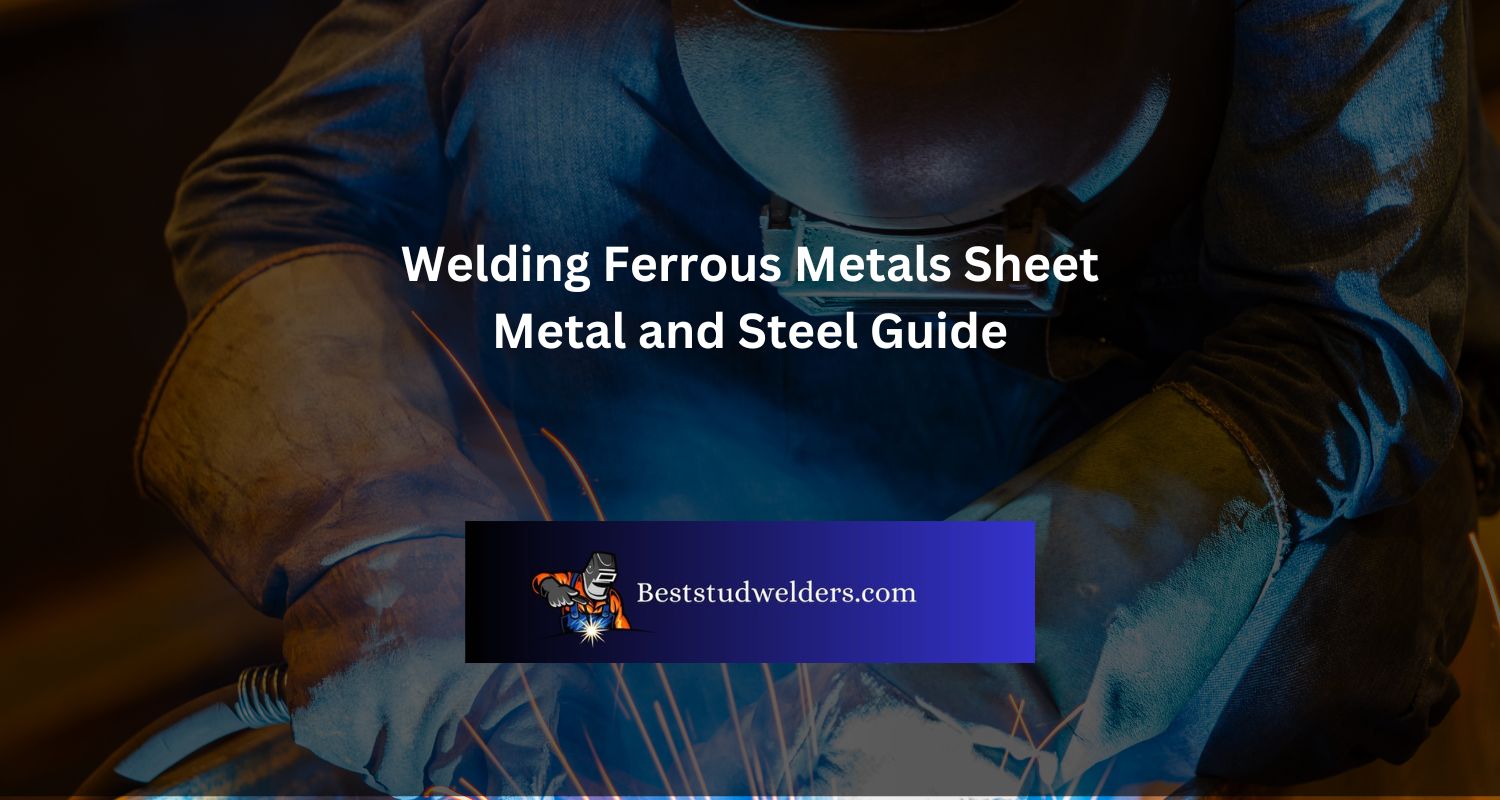Are you looking to diversify your welding abilities? Then TIG Welding may be something to look into!
TIG Welding (Tungsten Inert Gas Welding) is a specialized method of welding used for precise and accurate welds that require a high level of finishing.
It can be used on thin metals, dissimilar materials – like aluminum with stainless steel – as well as any material prone to contamination.
This makes it an attractive choice for many sectors in manufacturing.
In this blog post, we will explore what advantages and disadvantages come along with using TIG Welding professionally, so you can decide if it’s right for you!
The Basics of TIG Welding
To understand the basics of TIG welding with its components, definition, and workings, this section presents a solution. Delve into the sub-sections, which briefly introduce the definition of TIG welding, key components of TIG welder, and the way TIG welding works.
Definition of TIG Welding
TIG welding is an electric arc process to heat and melt metal together. It yields high-quality welds with minimal distortion, and is used in aerospace, automotive and nuclear industries. It’s a precise, skilled form of welding.
A tungsten electrode creates the arc. This is shielded by inert gas to prevent oxidation. The filler material is added separately, for greater control. TIG welding is great for thin materials or accurate, precise applications.
Welders use foot pedals to control current, and hold the torch and add filler material with both hands. This slows down the process but produces top-notch results.
A professional welder shared his experience in mastering TIG welding. He said it took years to develop his skills and technique. He practiced on scrap metal pieces and honed his hand-eye coordination with training exercises. His hard work paid off; he became known for creating exceptional TIG welds!
TIG Welder Components
TIG Welding is a delicate process that needs certain components in order to get accurate results. The machine for this type of welding is made up of various parts.
Here are some of the TIG Welding Components along with their descriptions:
- Power Source – A device which creates electric currents for welding.
- Welding Torch – It directs the output from the tungsten electrode to the weld area and controls the start/stop, gas flow, and amperage of the welding.
- Shielding Gas – This shields the weld to avoid oxidation or contamination due to melting and solidification.
- Filler Metal – This works like a patch in places where the metal has melted away or as an extra layer on the existing material.
The tungsten filament for welding must be carefully chosen to match the workpiece material’s conductivity levels without any Oxidation.
Throughout the years, some of the TIG Welding components have been upgraded, such as Plasma Arc Welding. Plasma Arc Welding was introduced in 1957; it utilizes compressed air to produce plasma in an electrical arc by ionizing gas particles through a process that allows high heat conductivity, thus permitting more energy to be sent to harder metals than was initially possible.
How TIG Welders Work
TIG Welders employ electric systems that make arcs between its workpiece and electrode. This welding process melts the metals together, making a strong bond. Control of heat is done with two foot pedals – one for amperage and one for high-frequency current.
Electricity creates heat while shielding gases protect welding surfaces from oxidation. TIG welding has precision, which allows welds of various materials to join without causing harm or distorting the metal. This makes it ideal for thin sheets, stainless steel fabrications, and aerospace components.
The design of TIG welding machines has been updated since A.A. Benardos patented the first method in 1882. It was US spark plug manufacturers who modified them for their factories in the 1940s.
Nowadays, TIG welders are a must-have in modern fabrication shops due to its quality welds used on parts like automotive or medical equipment.
TIG Welding Applications
To explore the various applications of TIG welding (as a solution), this section focuses on TIG Welding Applications with a closer look at the aerospace, automotive, and medical industries, as well as art, sculpture, DIY projects, and home repairs (the sub-sections).
Aerospace Industry
TIG Welding is a key player in innovation and exploration. In Aerospace Engineering, it provides robustness, durability, and safety when making aircraft components.
We have provided a table below to illustrate the use of TIG Welding in Aerospace. It shows the Components, Material, Application Reasons, and Advantages.
| Components | Material | Application Reasons | Advantages |
|---|---|---|---|
| Piping systems | Titanium alloys with Nickel elements | Better corrosion and fatigue resistance | Improved safety regulations |
| Fuel lines | Stainless Steel Alloys mixed with Chromium, Nickel, and Molybdenum*(depending upon density) | Increase thermal stability New welding techniques on thin walls Erosion and Pitting Resistance Energy absorption | Fewer structural failures Avoids crack initiation sites Rapid welding with reliable power High-quality welds |
| Turbine blades | Super-alloys like Inconel and Cobalt | Sustains extreme stress and pressure Gas turbine engines and turbojet propulsion Heat cracking and fatigue failure Complex designs with increased efficiency | Fewer structural failures Specialized equipment used No crack initiation sites Rapid welding with high quality welds |
TIG Welding is also used in space shuttle fuel containers due to its structure safety. It can weld thin metals without burning or warping. Its advantages include increased durability, reduced weight, good control, and limited after-treatment.
Pro Tip: Calculate polarity and shield gas flow rates for every aerospace application. This is crucial for success.
Automotive Industry
TIG welding is renowned for its precision and accuracy. It’s lightweight yet strong welds make it the ideal choice for thin materials like aluminum and stainless steel. Moreover, it creates clean welds with no spatter or distortion, resulting in less post-weld cleanup – perfect for applications that require aesthetics, like luxury and sports cars.
TIG welding also allows the welding of dissimilar metals – a feat that can cause damage if not done correctly. Its precise control over heat input and filler metal deposition rates make it possible to create strong bonds without risk.
Here’s a Pro Tip for TIG welding in the Automotive Industry: pre-weld preparation is key. Cleaning and preparing surfaces ensure no extraneous materials weaken the bond. Plus, proper alignment of weld ends makes for smoother arcs and less warping.
TIG welding’s unique benefits make it invaluable in many manufacturing industries, including the Automotive Industry. It suits light and heavy-duty applications and produces high-quality welds.
Medical Industry
The medical sector has been hugely bolstered by the usage of TIG welding. This process joins stainless steel components for medical equipment, like surgical tools & implantable devices. It allows for precise and exact welds, which are vital in guaranteeing the safety and efficiency of these critical medical tools.
TIG welding is also used in producing medical gas cylinders, which store high-pressure oxygen and other gases employed in clinics and hospitals. The strong welds produced by TIG welding guarantee the protection of patients and healthcare workers.
A unique trait of TIG welding in the medical area is its skill to craft sterile welds that don’t need post-weld cleaning. This makes it a great pick for applications where neatness is essential.
Grand View Research, Inc. reports that the global market for medical equipment is forecasted to reach $507.3 billion by 2027, providing vast growth opportunities for the TIG welding industry.
Art and Sculpture
TIG Welding is acclaimed for its precision and versatility. This makes it ideal for creative art and sculpting. It can create intricate designs and shapes with a smooth finish. Traditional welding methods may leave rough edges or seams on metals like stainless steel, brass, or aluminum – ruining the art. TIG welding provides a seamless solution.
Fine details on small weldments are possible with TIG welding. This makes it perfect for metal arts like jewelry making and sculptures in museums or public places. The cost-effective process enables artists to bring their ideas to life without sacrificing quality.
To stay ahead of the competition, an artist or welder needs the latest cutting-edge equipment. This enhances capabilities, techniques, and production quality. Staying informed on new technologies can make TIG Welding output stand out, potentially increasing sales.
DIY and Home Repairs
TIG welding can be a great talent for DIYers and home repair enthusiasts. It offers precise control over heat and filler materials, making it ideal for strong joint creation on metal surfaces. Here’s how to get started:
- Choose the right gear: a TIG welding machine, tungsten electrode, filler rod, and gas supply are all necessary.
- Safety first: always wear gloves, welding masks, and sturdy clothing to protect yourself.
- Clean the surface: make sure the metal you’ll weld is free of debris for a smooth weld.
- Adjust the settings: customize the machine’s settings for optimal results based on project requirements and the thickness of the metal.
TIG welding has several advantages compared to MIG or stick welding. It creates a precise arc with little to no spatter or cleanup required. Plus, it uses filler rods instead of consumable electrodes, giving you more material options for each project.
The aerospace industry often utilizes TIG welding for its ability to weld intricate, thin metals. According to the Welding Equipment Manufacturers Association (WEMA), this method is popular in this sector.
Mastering TIG welding opens up opportunities for home projects. Plus, you can save money by fixing things yourself instead of calling in a professional.
.jpg)
Advantages and Disadvantages of TIG Welding
To understand the pros and cons of TIG welding, you need to know the advantages and disadvantages of this welding technique. TIG welding is favored for its high precision and ability to weld thin metals. However, it can be slower and requires more skill and experience. Read on to explore the benefits and drawbacks of TIG welding in the respective sub-sections.
Advantages
TIG welding offers many advantages in the welding industry. This includes precision, superior weld quality, low distortion and less post-weld clean-up. It is also versatile, as it can be used on different materials and thicknesses. Furthermore, TIG welding gives better visibility since there is no smoke or spatter.
The narrow heat-affected zone minimizes the risk of damaging material, and you can control the speed of adding filler metal for aesthetically pleasing welds. Plus, it is eco-friendly since it does not produce any harmful fumes or substances.
TIG welding was invented in 1940 by Russell Meredith. He used a tungsten electrode and helium gas as a shielding agent. Now, it is known as Gas Tungsten Arc Welding (GTAW) or Tungsten Inert Gas (TIG).
Disadvantages
TIG Welding: Points to Consider
This welding method has lots of benefits, however, some downsides should be kept in mind before deciding to use it.
- High Skill Levels: It is a complex process, requiring technical skill and precision. It also needs practice to master the use of a filler material, a torch, and a foot pedal all at the same time.
- Slower Processing: It takes more time than other welding techniques such as MIG or Stick Welding. This means it may not be suitable for projects with strict deadlines.
- Expensive Equipment: The tools needed for TIG welding are more costly than those for other methods. This may limit its use if the budget is tight.
Compatibility between materials should also be checked before starting TIG weld. Aluminium and magnesium may need special procedures for successful welding.
PRO TIP – Safety is key! Make sure you have the right safety gear, including gloves able to withstand extreme temperatures during TIG Welding.
Tips for Using a TIG Welder
To use a TIG welder with safety and precision for your welding tasks, follow these tips in terms of safety precautions, proper techniques, and maintenance and cleaning. In each of these sub-sections, you will find essential tips to ensure safety, efficient welding, and long-lasting performance of your TIG welder.
Safety Precautions
For your safety while TIG welding, take precautions. Here are effective preventive measures for security:
- Wear protective clothing, like flame-resistant gloves, welding jackets, leather boots and helmets.
- Ensure proper ventilation in the workspace to avoid toxic fumes.
- Inspect your equipment for any damage before starting.
- Keep a fire extinguisher nearby and know how to use it in an emergency.
Besides these primary protocols, remember not to lie or work near flammable material. Don’t touch metals with bare skin as they are hot after welding.
Be extra cautious when unsupervised by an experienced TIG welder. Welders have reported injuries due to negligence or lack of experience. Always take good precautions.
In a sad case, a workshop assistant lost three fingers due to carelessness. He didn’t follow safety rules while working on a high-voltage circuit. Our lives can be at risk without following precautionary measures.
Proper Techniques
For perfect TIG welding, use the right methodology. You can make high-quality results that look and work great. Clean metal surfaces are key. To get them, grind or polish with a wire brush. Keep these surfaces clean and free from contaminants.
Control power supply with the pedal. Adjust it based on material type. Practice until each step is automatic. Don’t settle for bad results. Master these techniques for precision excellence!
Maintenance and Cleaning
Upholding and Sanitizing TIG Welding Gear!
Maximizing the life of your TIG welder is key – here are some tips on keeping it clean:
- Clean the welding torch, parts, and electrode holder regularly.
- Check the power unit – make sure it’s free from dirt that can lead to overheating.
- Clean the wire feeder and replace worn-out parts like rollers, liners, or tips.
- Switch out faulty sensors and fuses quickly.
- Store it securely when not in use – to ward off contamination of welding wire or electrodes.
Safety measures should be taken while cleaning – wear gloves and clothing.
Check for signs of damage or wear before each use, to avoid unexpected breakdowns.
A Little History:
TIG welding was invented in the 1930s. It employs a non-consumable tungsten electrode for precise welding. Nowadays, it is used a lot in metal product manufacturing across various industries.
Choosing the Right TIG Welder
To choose the right TIG welder for your welding needs, you need to consider several factors. In this section, we will discuss the considerations that will help you choose a TIG welder, as well as some of the most popular brands of TIG welders available in the market.
Considerations for Choosing a TIG Welder
Picking the right TIG Welder is key. Take into account these factors:
| Key Consideration | Description |
| Power Input | Check the voltage and amperage for your project. |
| Welding Capacity | Think about the type and thickness of material you are welding. Pick a welder with a high duty cycle and good output. |
| User-Friendliness | Choose a model that fits your skill level, weight, mobility, accessories, and warranty. |
| Budgetary Constraints | Pick a welder that meets your needs and fits your budget. Prices vary based on features. |
| Maintenance Requirements | Look for a welder with low maintenance cost, easily-found spares, and repair instructions. |
| Brand Reputation | Choose a trustworthy brand with great reviews. It should produce durable machines with good after-sale services. |
Also, don’t just shop one manufacturer. Check out reviews from other users.
Pro Tip: Find a dependable model within your budget and read the manual to get the most out of your machine.
Popular Brands of TIG Welders
When it comes to selecting a TIG welder, brand choice is key. Here’s an overview of the most popular TIG welders’ brands.
See the table below for info:
| Brand | Features | Warranty |
|---|---|---|
| Miller Electric | Efficient output power, user-friendly interface, and flexibility. | 3-year warranty |
| Lincoln Electric | Excellent ARC stability, selectable wave shaping, and patented Micro-Start II technology. | 3-year warranty |
| ESAB Welders | Rugged design, advanced control panel features like HF or LiftArc starting modes. | 3-year warranty |
| Everlast Power Equipment | Latest IGBT/HF inverter technology equipped machines and multiple AC waveform selection options. | 5-year warranty |
Each brand has its own features and product lines. Plus, Schaefer Welding Equipment Inc. provides customer-centric solutions since 1967.
It’s important to consider motor needs when selecting a TIG brand. Compare each brand’s specifications before making a purchase.
TIG Welding has a long history. It first emerged in WWII for aircraft projects. Now it’s used for many operations from build wrought iron fence to high precision aerospace welding works.
Conclusion
TIG welders are vital in the welding industry, renowned for their efficiency and versatility. They can weld all kinds of materials, from thick metals to thin sheets. TIG welders also produce neat and tidy finishes while creating minimal waste, making them ideal for intricate tasks.
This technique has become increasingly popular due to its high-quality results, durability and flexibility. A TIG welder offers incredible control over heat input and tungsten electrode temperatures. It’s suitable for many industries, such as aerospace and automotive repair, construction and maintenance work.
Studies show skilled welders can complete projects faster with a TIG welder than with traditional methods. It’s no wonder, as it offers superior precision and control. However, experts at Welding.com note that “TIG welding is considered one of the hardest” techniques. Mastering it requires patience, practice and the right training!
Paul Dixon is a certified welder with a wealth of experience in welding and related technologies. He started his career as an apprenticeship in welding, where he learned the ropes and acquired extensive skills in the craft.
Over the years, Paul has continued to sharpen his expertise, earning him top-rated welding certification. He remains one of the most outstanding welders in the industry.







